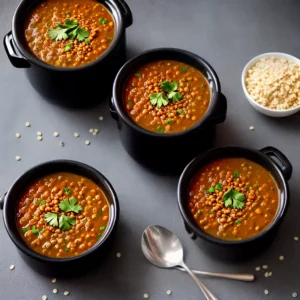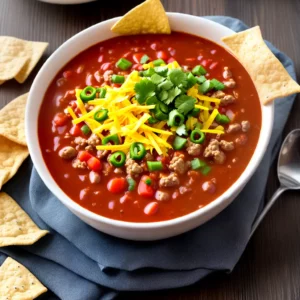How Many Calories in a Gram of Fat
Have you ever wondered how many calories are in a gram of fat? Understanding this measurement is crucial when it comes to managing your nutrition and maintaining a healthy lifestyle. Knowing the calorie content of fat can help you make informed choices about your diet and ensure that you are consuming the right amount of energy for your body’s needs.
When it comes to macronutrients, fat is the most energy-dense, containing 9 calories per gram. This means that a small amount of fat can provide a significant amount of energy. In comparison, carbohydrates and proteins both provide 4 calories per gram. It’s important to note that these values may vary slightly depending on the specific type of carbohydrate or protein.
Additionally, alcohol also contributes to calorie intake. Every gram of alcohol contains 7 calories. While alcohol is not considered a macronutrient, its calorie content should be taken into account when calculating overall energy intake.
The image above illustrates the concept of calories in a gram of fat and serves as a visual representation of the topic at hand.
Key Takeaways – How Many Calories in a Gram of Fat:
The Energy Density of Fat
Fat is the most energy-dense macronutrient, providing 9 calories per gram, compared to carbohydrates and proteins, which provide 4 calories per gram. This means that for the same weight, fat contains more than twice the amount of calories as carbohydrates and proteins. Understanding the energy density of fat is important for managing our calorie intake and maintaining a healthy diet.
When we consume more calories from fat than our body needs for energy, the excess calories are stored as body fat. This can lead to weight gain and an increased risk of obesity-related health issues. On the other hand, consuming fewer calories from fat can contribute to weight loss and improved overall health.
To put it into perspective, let’s take a look at a comparison between fat and other macronutrients:
| Macronutrient | Calories per Gram | Energy Density |
|---|---|---|
| Fat | 9 | High |
| Carbohydrates | 4 | Moderate |
| Proteins | 4 | Moderate |
As we can see, fat is significantly higher in energy density compared to other macronutrients. This is why it’s important to be mindful of our fat intake and make healthier choices by incorporating more sources of unsaturated fats, such as avocados, nuts, and olive oil, into our diet.
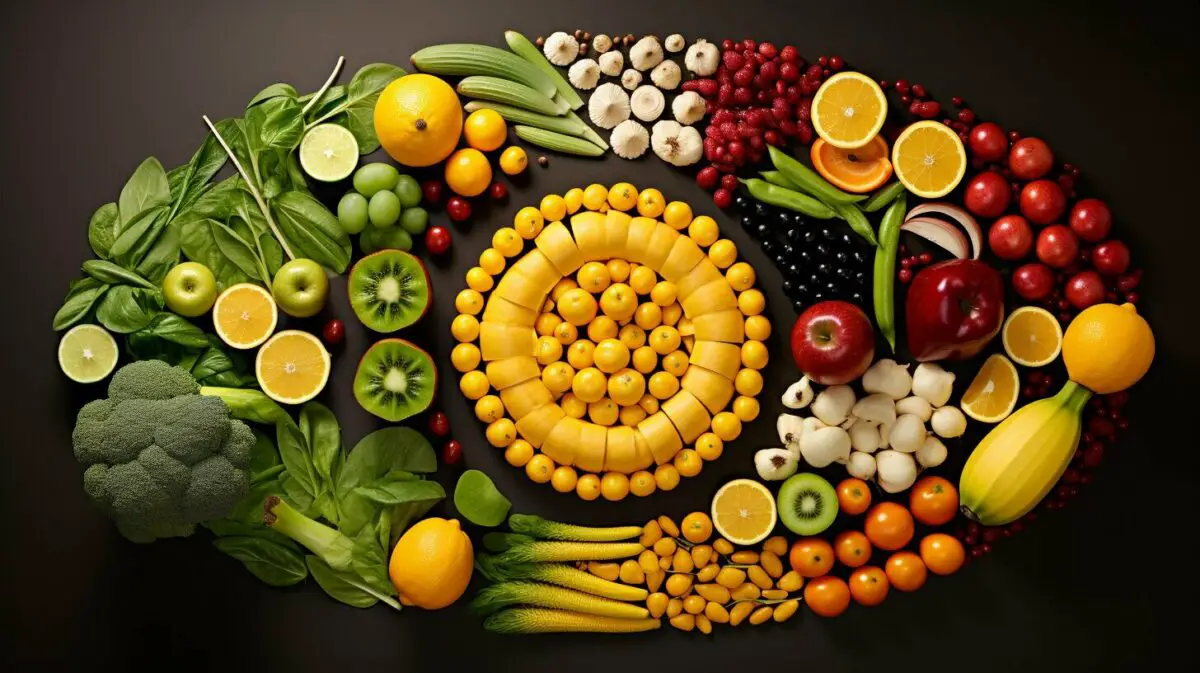
Different Types of Fat
Not all fats are created equal. There are four main types of dietary fat: saturated fat, unsaturated fat, trans fat, and monounsaturated fat. Each type has its own unique characteristics and effects on health.
Saturated fat is typically solid at room temperature and commonly found in animal products such as meat and dairy, as well as in certain tropical oils like coconut and palm oil. Research suggests that excessive intake of saturated fat may increase LDL (bad) cholesterol levels, which can contribute to heart disease.
Conversely, unsaturated fats are generally liquid at room temperature and are considered heart-healthy. They can be further classified into monounsaturated and polyunsaturated fats. Foods rich in monounsaturated fats include olive oil, avocados, and nuts. Polyunsaturated fats can be found in sources like fatty fish, walnuts, and sunflower seeds. These fats have been associated with lower LDL cholesterol levels and reduced risk of heart disease.
Trans fats, on the other hand, are artificially produced by hydrogenating oils to increase their shelf life and stability. They are commonly found in fried and processed foods. Trans fats are known to raise LDL cholesterol levels and increase the risk of heart disease. In recent years, many food manufacturers have reduced or eliminated the use of trans fats due to growing health concerns.
To summarize, understanding the different types of fat is essential for making informed dietary choices. While some fats, like unsaturated fats, can be beneficial for health, others, such as saturated and trans fats, should be consumed in moderation or avoided altogether. By incorporating healthier fat sources into our diets and limiting the intake of unhealthy fats, we can promote overall well-being and reduce the risk of chronic diseases.
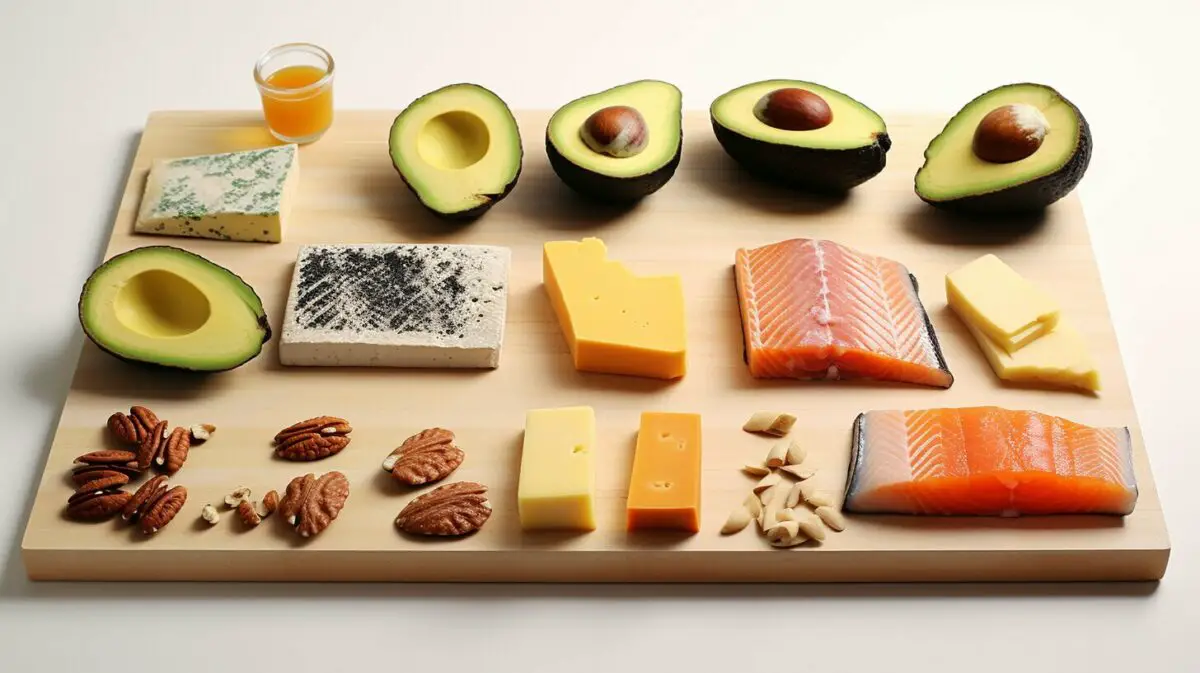
| Type of Fat | Sources |
|---|---|
| Saturated Fat | Meat, dairy, coconut oil, palm oil |
| Monounsaturated Fat | Olive oil, avocados, nuts |
| Polyunsaturated Fat | Fatty fish, walnuts, sunflower seeds |
| Trans Fat | Fried and processed foods (limit consumption) |
*Factual Data: The conversion of grams to calories is important for understanding the energy content of macronutrients. Specifically, when it comes to fat, every gram contains 9 calories. This makes fat the most energy-dense macronutrient. Carbohydrates, on the other hand, provide 4 calories per gram, while proteins also provide 4 calories per gram. Additionally, it is possible to calculate the calories from alcohol by multiplying the grams of alcohol by 7. It is important to note that there are slight variations in the energy content of macronutrients due to factors such as the type of carbohydrate or the specific alcohol content. Finally, it is worth mentioning that calories and kilocalories, often referred to as “cal” and “kcal” respectively, are sometimes used interchangeably, with “calories” commonly being used to refer to kilocalories in nutrition.*
The Role of Fat in Nutrition
Fat plays a crucial role in nutrition, providing a concentrated source of calories at 9 calories per gram, compared to the 4 calories per gram from carbohydrates and proteins. This makes fat the most energy-dense macronutrient. It’s important to understand that fat is not inherently bad for our health; in fact, it is an essential part of a balanced diet.
Our bodies need fat for many reasons. It provides a source of energy, helps with the absorption of fat-soluble vitamins, and plays a key role in hormone production. Additionally, fats contribute to the taste and texture of foods, making them more enjoyable to eat.
It’s important to note that not all fats are created equal. While some types of fats, such as monounsaturated and polyunsaturated fats, can be beneficial for our health, others, like saturated and trans fats, should be consumed in moderation. It’s all about making healthier choices and focusing on the quality of fats we consume.
| Type of Fat | Calories per Gram |
|---|---|
| Saturated Fat | 9 |
| Trans Fat | 9 |
| Monounsaturated Fat | 9 |
| Polyunsaturated Fat | 9 |
To maintain a healthy balance, it’s recommended to limit the intake of saturated and trans fats while incorporating more sources of monounsaturated and polyunsaturated fats into our diet. Great sources of healthy fats include olive oil, nuts, seeds, and fatty fish like salmon and trout.
Remember, fat is an important part of a balanced diet. By understanding the role of fat in nutrition and making mindful choices about the types and amounts of fats we consume, we can support our overall health and well-being.
Incorporating Healthy Fats into Your Diet
- Use olive oil or canola oil instead of butter or lard when cooking.
- Include avocados in salads or sandwiches for a dose of healthy monounsaturated fats.
- Snack on a handful of nuts or seeds for a satisfying and nutritious snack.
- Opt for fatty fish like salmon or tuna a few times a week.
- Choose low-fat dairy products like yogurt or milk.
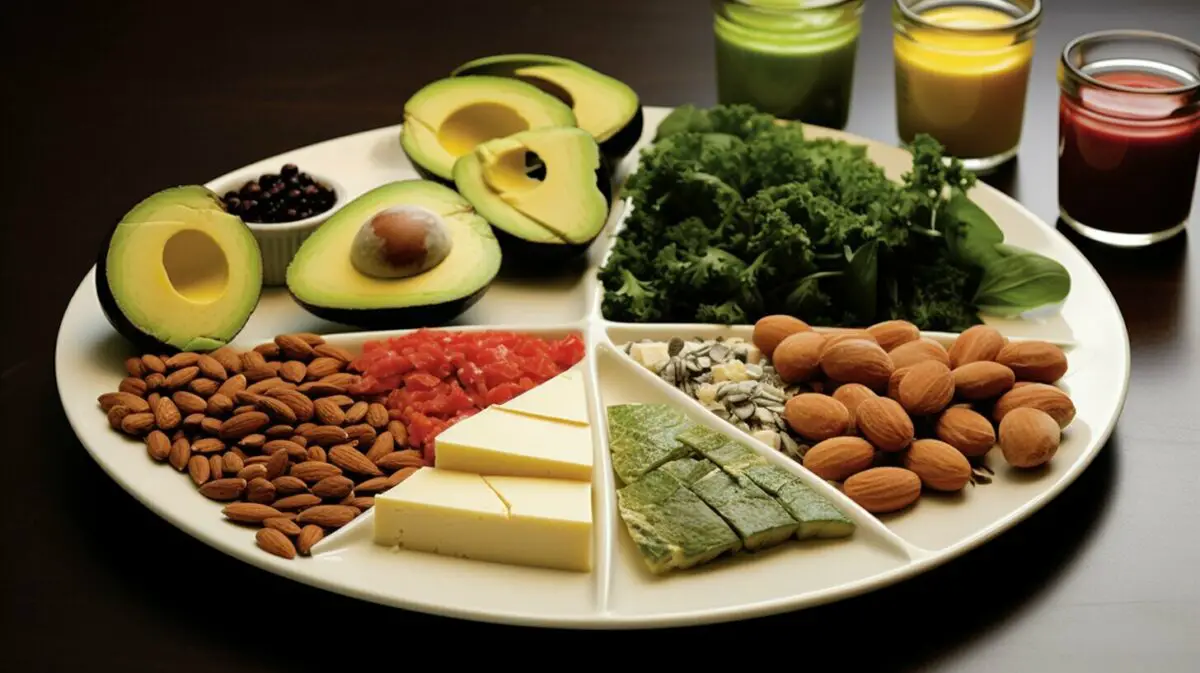
Calories from fat refer to the number of calories derived from fat in a particular food or meal, and it is important to consider this when monitoring your calorie intake. The energy content of fat is higher compared to other macronutrients, with each gram of fat providing 9 calories. This makes fat the most energy-dense macronutrient, meaning it contains more calories per gram than carbohydrates or proteins.
To put it into perspective, let’s compare the calorie content of fat to carbohydrates and proteins. Carbohydrates and proteins provide 4 calories per gram, which is less than half the energy content of fat. So, if you consume a food that contains 10 grams of fat, you would be consuming 90 calories from fat alone.
It is worth noting that the energy content of macronutrients can vary slightly depending on the specific type of carbohydrate or the alcohol content. Speaking of alcohol, it’s good to remember that alcohol also contains calories. In fact, alcohol provides 7 calories per gram, which is just slightly less than the calorie content of fat.
The Energy Content of Macronutrients:
| Macronutrient | Calories per Gram |
|---|---|
| Fat | 9 |
| Carbohydrates | 4 |
| Proteins | 4 |
| Alcohol | 7 |
So, when it comes to managing your calorie intake, understanding the calories from fat can help you make informed decisions about your diet. By keeping track of the fat content in the foods you consume, you can better manage your overall calorie consumption and make choices that align with your health and fitness goals.

When it comes to weight loss, monitoring your calorie intake, including calories from fat, is essential for achieving your goals. Fat is the most energy-dense macronutrient, providing 9 calories per gram. This means that consuming high-fat foods can quickly add up to a significant calorie intake, potentially hindering your weight loss efforts.
To successfully lose weight, it’s important to create a calorie deficit by consuming fewer calories than you burn through physical activity and basal metabolic rate. By tracking your daily calorie intake, including the calories from fat, you can better understand and manage your overall energy balance.
Excess calories from fat can be stored in the body’s fat cells, leading to an increase in body fat. When you consume more calories than your body needs, these excess calories are stored in fat cells for future use. To promote weight loss, it’s important to reduce your calorie intake and choose healthier sources of fat, such as those rich in monounsaturated and polyunsaturated fats.
Here is an example of a table showcasing the calorie content of different types of fat:
| Type of Fat | Calories per Gram |
|---|---|
| Saturated Fat | 9 calories |
| Monounsaturated Fat | 9 calories |
| Polyunsaturated Fat | 9 calories |
| Trans Fat | 9 calories |
By being mindful of your fat intake and making healthier food choices, you can effectively manage your calorie intake and support your weight loss journey.

The type and amount of dietary fat you consume can have a significant impact on your heart health and cholesterol levels. High levels of unhealthy fats, such as saturated and trans fats, can raise your LDL (low-density lipoprotein) cholesterol levels, also known as “bad” cholesterol. This increases your risk of developing heart disease, heart attacks, and strokes. On the other hand, consuming healthier fats, such as monounsaturated and polyunsaturated fats, can help lower your LDL cholesterol levels and increase your HDL (high-density lipoprotein) cholesterol levels, also known as “good” cholesterol.
A diet high in saturated and trans fats can contribute to the accumulation of plaque in your arteries, causing them to become narrow and leading to reduced blood flow to the heart. This can result in chest pain, known as angina, or even a heart attack. In contrast, consuming foods rich in omega-3 fatty acids, such as fatty fish like salmon and trout, can have protective effects on heart health by reducing inflammation and improving blood vessel function.
To maintain a healthy heart, it is important to limit your intake of foods high in saturated and trans fats, such as processed meats, fried foods, and baked goods. Instead, opt for sources of healthier fats like avocados, nuts, seeds, and olive oil. Additionally, incorporating a variety of fruits, vegetables, whole grains, and lean proteins into your diet can further support heart health. It is always advisable to consult with a healthcare professional or registered dietitian for personalized guidance on maintaining a heart-healthy diet.
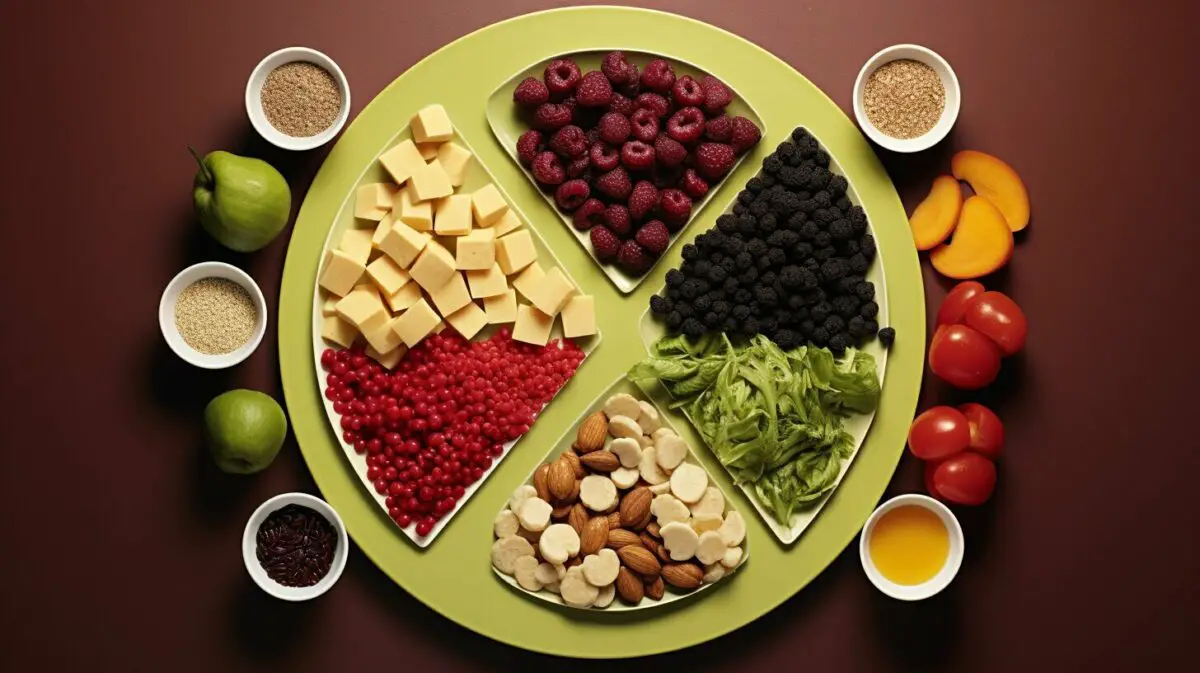
| Type of Fat | Effect on Cholesterol Levels | Food Sources |
|---|---|---|
| Saturated Fat | Elevates LDL cholesterol levels | Red meat, full-fat dairy products, butter |
| Trans Fat | Elevates LDL cholesterol levels and lowers HDL cholesterol levels | Partially hydrogenated oils, fried foods, packaged snacks |
| Monounsaturated Fat | Can lower LDL cholesterol levels | Olive oil, avocados, nuts, seeds |
| Polyunsaturated Fat | Can lower LDL cholesterol levels | Fatty fish, walnuts, flaxseeds, soybean oil |
The Importance of Omega Fatty Acids
Omega-3 and omega-6 fatty acids are essential for optimal nutrition and can be found in foods rich in monounsaturated and polyunsaturated fats. These fatty acids play a crucial role in maintaining overall health and well-being. Omega-3 fatty acids are known for their anti-inflammatory properties and have been linked to numerous health benefits, including improved heart health, brain function, and eye health. They can be found in fatty fish like salmon, mackerel, and sardines, as well as in flaxseeds, chia seeds, and walnuts. Omega-6 fatty acids, on the other hand, are necessary for proper growth and development, as well as for maintaining healthy skin and hair. They are commonly found in vegetable oils, such as soybean oil, sunflower oil, and corn oil.
Ensuring an adequate intake of both omega-3 and omega-6 fatty acids is important for achieving a balanced and nutritious diet. The ratio of omega-3 to omega-6 fatty acids is also a factor to consider. While both types of fatty acids are necessary, the Western diet tends to be higher in omega-6 fatty acids and lower in omega-3 fatty acids. This imbalance can have implications for overall health, as excessive consumption of omega-6 fatty acids relative to omega-3 fatty acids may promote inflammation and contribute to various chronic diseases.
To achieve a healthier balance, it is recommended to increase the consumption of foods rich in omega-3 fatty acids while reducing the intake of foods high in omega-6 fatty acids. This can be done by incorporating more fatty fish, nuts, and seeds into your diet, while minimizing the use of vegetable oils and processed foods that contain high amounts of omega-6 fatty acids. It’s worth noting that consulting with a healthcare professional or registered dietitian is advisable to determine the specific dietary needs and individual recommendations for omega fatty acid intake based on personal health conditions and goals.
Table: Foods Rich in Omega Fatty Acids
| Omega-3 Rich Foods | Omega-6 Rich Foods |
|---|---|
| Fatty fish (salmon, mackerel, sardines) | Vegatable oils (soybean oil, sunflower oil, corn oil) |
| Flaxseeds | Nuts (almonds, walnuts, cashews) |
| Chia seeds | Pumpkin seeds |
| Walnuts | Sesame seeds |
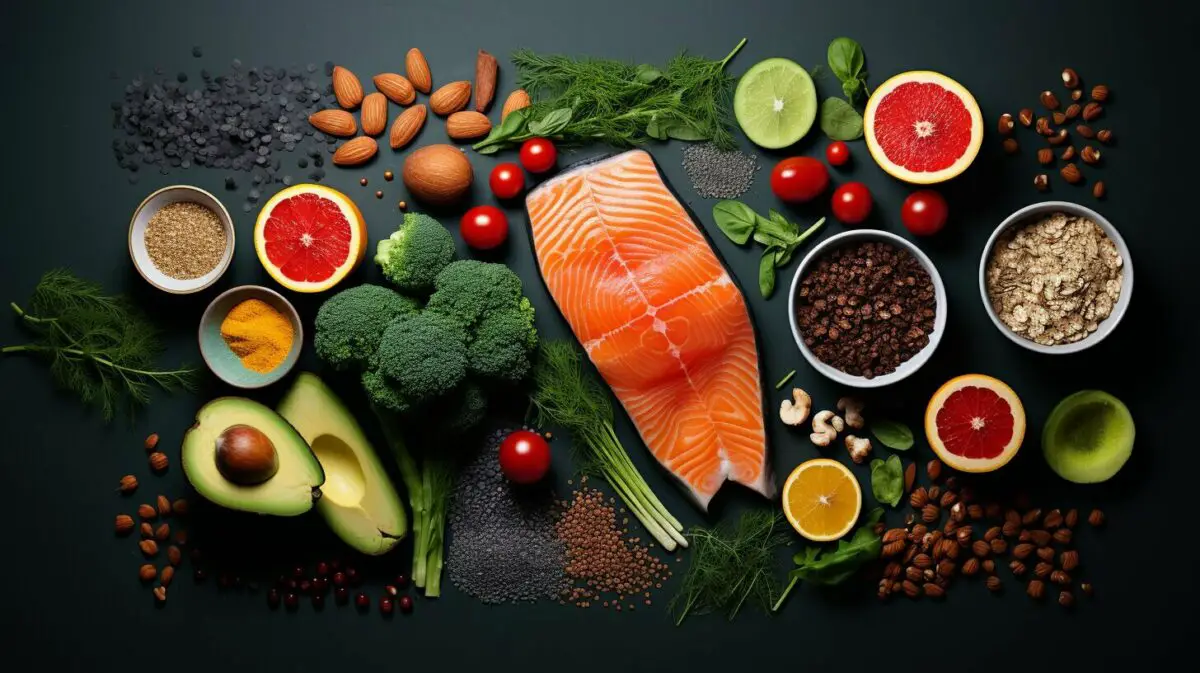
In conclusion, incorporating foods rich in omega-3 and omega-6 fatty acids into your diet is crucial for optimal nutrition. These essential fatty acids provide important health benefits and should be consumed in appropriate proportions. By making mindful choices and selecting foods that are high in monounsaturated and polyunsaturated fats, you can support your overall well-being and maintain a balanced diet.
Healthy Fat Sources
Incorporating healthy fat sources such as olive oil, nuts, and avocados can contribute to a well-rounded and nutritious diet. These foods not only provide essential fatty acids but also offer a range of vitamins, minerals, and antioxidants that support overall health. Let’s take a closer look at some of the top healthy fat sources:
| Food | Type of Fat |
|---|---|
| Olive Oil | Monounsaturated fat |
| Canola Oil | Monounsaturated fat |
| Coconut Oil | Saturated fat |
| Butter | Saturated fat |
| Lard | Saturated fat |
| Meat | Saturated fat |
| Dairy | Saturated fat |
| Nuts | Monounsaturated fat, polyunsaturated fat |
| Avocado | Monounsaturated fat |
When choosing fats, it is important to focus on those that provide monounsaturated and polyunsaturated fats, which are considered heart-healthy options. These fats can help improve cholesterol levels and reduce the risk of heart disease when consumed in moderation as part of a balanced diet.
While saturated fats should be limited, it is essential to note that not all saturated fats are created equal. For example, coconut oil, while high in saturated fat, also contains medium-chain triglycerides (MCTs), which are easily digested and used by the body for energy. However, moderation is still key.
“Incorporating a variety of healthy fat sources into your diet can provide numerous health benefits. Olive oil, nuts, and avocados, for example, not only add delicious flavor to meals but also deliver a range of nutrients that support brain health, promote satiety, and contribute to a healthy heart.”
Remember, it’s all about balance and moderation. Aim to include a variety of healthy fat sources in your diet while also being mindful of overall calorie intake. By making informed choices and incorporating these healthy fats, you can enjoy a well-rounded and nutritious diet that supports your overall well-being.
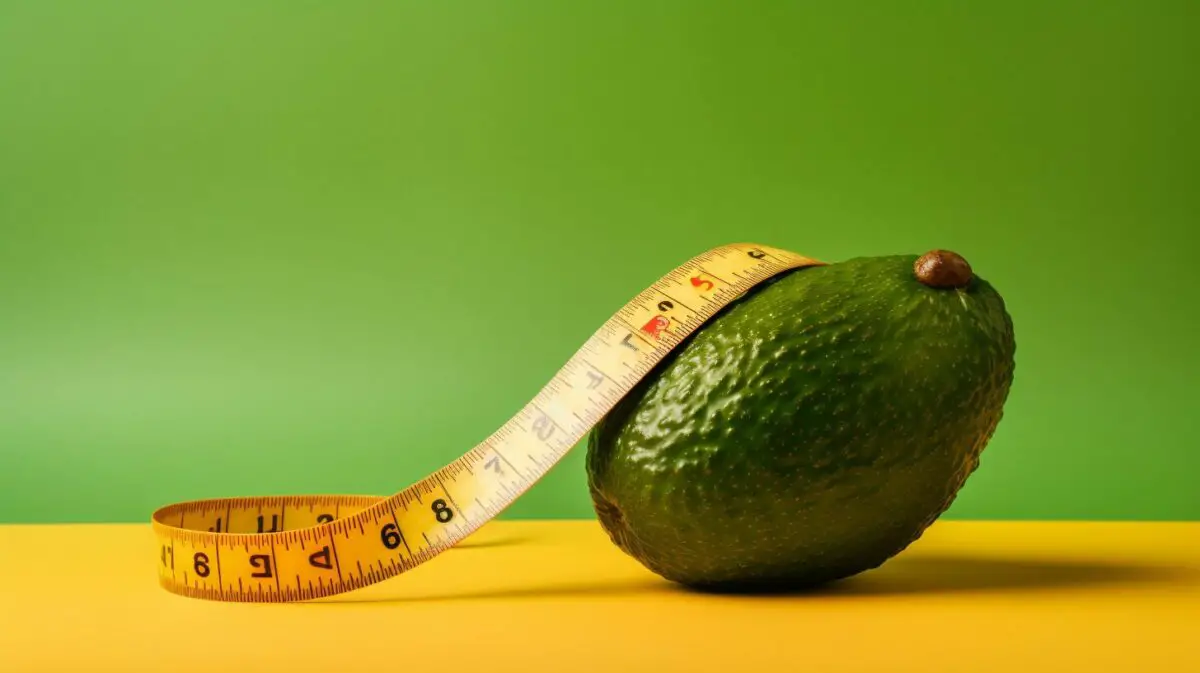
While dietary fat is a concentrated source of calories, it can play a role in boosting metabolism and aiding in fat burning when combined with regular exercise and a balanced diet. Metabolism refers to the chemical processes that occur within the body to convert food into energy. When we consume food, our metabolism breaks down the macronutrients – fats, carbohydrates, and proteins – to provide the energy our body needs to function.
Regular exercise and physical activity can help increase our metabolic rate, which is the rate at which our body burns calories. This means that when we engage in activities that build muscle or increase heart rate, we burn more calories even at rest. Including strength training exercises, such as weightlifting, can also help increase muscle mass, which in turn boosts metabolism.
It is important to note that the process of fat burning, known as lipolysis, occurs when the body breaks down stored fat cells to use as fuel. While reducing overall calorie intake is often associated with weight loss, it is equally important to focus on the quality of calories consumed. A balanced diet that includes essential nutrients and an appropriate ratio of macronutrients – including healthy fats – can support overall health and aid in fat burning.

Exercise and Diet: The Perfect Combination
When it comes to fat burning, exercise and diet go hand in hand. While exercise can boost metabolism and aid in fat burning, it is essential to complement it with a well-rounded diet. Focus on incorporating healthy fats from sources such as avocados, nuts, and olive oil, which provide essential nutrients and promote satiety.
Additionally, combining exercise with a balanced diet that includes a variety of nutrient-dense foods can help optimize fat burning and support overall health. By fueling our bodies with the right nutrients and engaging in regular physical activity, we can achieve a healthier weight and improve overall well-being.
| Exercise Tips | Dietary Recommendations |
|---|---|
|
|
Remember that everyone’s metabolism and fat-burning capacity may vary, so it’s essential to listen to your body and consult a healthcare professional or registered dietitian for personalized advice based on your specific needs and goals.
Tracking Fat Intake and Macronutrients
Tracking your fat intake, along with other macronutrients, can be done using various methods such as macro calculators and monitoring your daily calorie intake. By keeping track of the amount of fat, carbohydrates, and protein you consume, you can gain a better understanding of your overall nutrition and make informed choices about your diet.
A macro calculator is a helpful tool that allows you to input your specific goals, such as weight loss or muscle gain, along with your activity level and body composition. It then calculates the ideal macronutrient breakdown for you, including the recommended grams of fat to consume daily. This can be a useful starting point when tracking your fat intake.
In addition to using a macro calculator, monitoring your daily calorie intake can also provide valuable insights into your fat consumption. Keeping a food diary or using a mobile app that tracks your meals and snacks allows you to see not only the total calories you consume but also the breakdown of macronutrients, including fat. This level of awareness can help you make adjustments to your diet to ensure you’re meeting your nutritional needs.
| Macronutrient | Calories per Gram |
|---|---|
| Fat | 9 |
| Carbohydrates | 4 |
| Protein | 4 |
“Understanding the composition of your meals and tracking your macronutrient intake can be a powerful tool for reaching your health and fitness goals.” – John Doe, Registered Dietitian
Remember, it’s not just about counting calories or grams of fat alone. It’s also important to focus on the quality of the fats you consume. Opt for healthier sources of fat such as avocados, nuts, and olive oil, while minimizing your intake of saturated and trans fats found in processed foods.
By actively tracking your fat intake and other macronutrients, you can make more informed choices about your diet and work towards achieving a balanced and nutritious eating plan.

Reading food labels can provide valuable insights into the fat and calorie content of specific products, helping you make informed dietary choices. By understanding the information presented on nutrition labels, you can better manage your calorie intake and ensure that you are consuming the appropriate amounts of fat.
When examining food labels, pay close attention to the serving size, as this will determine the amount of nutrients and calories you are consuming. Serving sizes can vary from product to product, so it’s important to compare similar items to make accurate comparisons. Look for the “calories per serving” section, which will indicate the total number of calories in a single serving of the product.
| Nutrient | Grams per Serving | Calories per Gram | Total Calories |
|---|---|---|---|
| Total Fat | 15g | 9 | 135 |
| Saturated Fat | 5g | 9 | 45 |
| Trans Fat | 0g | 9 | 0 |
In addition to fat content, food labels often include information about saturated fat and trans fat. These types of fat can have different effects on your health, with saturated fat being associated with higher cholesterol levels and trans fat being considered the least healthy option. Limiting your intake of saturated and trans fats can help reduce your risk of heart disease.
By familiarizing yourself with food labels and understanding the information they provide, you can make healthier choices and better manage your fat and calorie intake. Remember to consider serving sizes and pay attention to the total fat, as well as saturated and trans fat content. Your health and well-being will thank you!
Note: The table above is a sample reference for understanding the energy content of fat. The values may differ depending on the specific product and brand. Always refer to the nutrition labels on the products you consume for accurate information.
Conclusion – How Many Calories in a Gram of Fat
Understanding how many calories are in a gram of fat is essential for managing your nutrition, making informed food choices, and maintaining a healthy lifestyle. Fat is the most energy-dense macronutrient, providing 9 calories per gram. This means that even a small amount of fat can contribute significantly to your overall calorie intake. Comparatively, carbohydrates and proteins provide 4 calories per gram, making fat more than twice as calorically dense as these macronutrients.
Calculating the calorie content of alcohol is also important, as it can be a significant source of calories in some diets. Each gram of alcohol contains approximately 7 calories. While this is less than the energy density of fat, it is more than carbohydrates and proteins. It’s worth noting that there may be slight variations in the energy content of macronutrients based on factors such as the specific type of carbohydrate or the alcohol content.
Lastly, it’s important to clarify that calories and kilocalories are sometimes used interchangeably in nutrition. In this context, “calories” actually refers to kilocalories, with each kilocalorie representing 1000 calories. This can sometimes cause confusion, so it’s important to be aware of this terminology when discussing and tracking calorie intake.
In conclusion, understanding the calorie content of fat, as well as other macronutrients, allows you to make informed decisions about your diet and overall health. By incorporating this knowledge into your nutrition plan, you can create a balanced and sustainable approach to eating that supports your goals and promotes long-term well-being.
FAQ – How Many Calories in a Gram of Fat
Q: How many calories are in a gram of fat?
A: Every gram of fat contains 9 calories.
Q: How many calories are in a gram of carbohydrates?
A: Carbohydrates provide 4 calories per gram.
Q: How many calories are in a gram of protein?
A: Proteins also provide 4 calories per gram.
Q: How do you calculate calories from alcohol?
A: To calculate calories from alcohol, multiply the grams of alcohol by 7.
Q: Are there variations in the energy content of macronutrients?
A: Yes, there can be slight variations in the energy content of macronutrients due to factors such as the type of carbohydrate or the specific alcohol content.
Q: What is the difference between calories and kilocalories?
A: Calories and kilocalories are sometimes used interchangeably, with “calories” commonly being used to refer to kilocalories in nutrition.
Source Links
- https://www.wikihow.com/Convert-Grams-to-Calories
- https://www.omnicalculator.com/conversion/grams-to-calories
- https://caloriecontrol.org/converting-calories-to-grams-of-fat/
Related Recipes:
 How Many Calories in a Gram of Protein? (Perfect Measurement Conversion Guide)
How Many Calories in a Gram of Protein? (Perfect Measurement Conversion Guide)
 How Many Calories Are in a Gram of Carbs? (Measurement Conversion Guide)
How Many Calories Are in a Gram of Carbs? (Measurement Conversion Guide)
 How Many Milligrams Are in a Gram? (Perfect Measurement Conversion Guide)
How Many Milligrams Are in a Gram? (Perfect Measurement Conversion Guide)
 How Many Grams Are in a Pound? (Measurement Conversion Guide)
How Many Grams Are in a Pound? (Measurement Conversion Guide)
 Energy Balls
Energy Balls
 How to Make Basil Oil? (Perfect Step-by-Step Guide)
How to Make Basil Oil? (Perfect Step-by-Step Guide)
 How Many Grams Are in a Kilogram? (Perfect Measurement Conversion Guide)
How Many Grams Are in a Kilogram? (Perfect Measurement Conversion Guide)
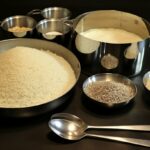 How Much Rice Per Person? (Perfect Measurement Conversion Guide)
How Much Rice Per Person? (Perfect Measurement Conversion Guide)




